Penso che il tema del disegno di architettura rappresenti attualmente una delle più interessanti forme di ricerca nel campo architettonico: la questione su quale direzione possa prendere e quale significato possa avere il disegno nell'era digitale, rimanda alla questione che si pose sul significato della ricerca pittorica all'indomani della scoperta della fotografia.
Tralasciando, naturalmente, qualunque nostalgico ritorno/rigurgito di formule superate, se ci si vuol fare un'idea di cosa significhi la ricerca in questa direzione, consiglio di visitare questo sito su
Perry Kulper:
Vidi la sua mostra all'Architectural Association, credo nel 2006, e come tutte le forme di ricerca, la comprensione implica un approfondimento.
Ci sono un paio di pubblicazioni particolarmente interessanti su questo tema:
La prima è di Peter Cook (e di chi altri poteva essere...) "Drawing, The Motive Force Of Architecture" AD
Primer - 2008
La seconda, recentissima, di Neil Spiller "Drawing Architecture", data settembre 2013.
Infine, anche se non riguarda prettamente l'ambito architettonico, "Vitamin D - New Perspectives in Drawing", bellissimo libro della Phaidon
Due siti raccolgono materiale molto interessante sul disegno di architettura:
The Draftery and Drawing Architecture
Qui c'è una selezione dei miei lavori su the Draftery:
No. 034 - "When the Paths of Every City Are Committed to Memory"
---
I think
that the drawing of architecture currently represents one of the most
interesting fields of the research in architecture: the question of which
direction it can take and what meaning can have it, in the digital era, reminds the question about the significance of painting in the aftermath of
the discovery of photography.
Leaving
aside, of course, any nostalgic return/regurgitation of formulas overcome, if
you want to get an idea of what it means to the research in this direction, I
suggest to visit this website about Perry Kulper:
I saw
his exhibition at the Architectural Association (I think it was in 2006) and, as for
all forms of research, understanding involves deepening.
There are a couple of particularly interesting
publications on this topic:
The
first is by Peter Cook (and who else could it be ... ) "Drawing , The Motive Force Of Architecture "
AD Primer – 2008.
The second,
recently, by Neil Spiller "Drawing Architecture", September 2013.
Finally,
although not strictly related to the field of architecture, "Vitamin D - New Perspectives in Drawing": beautiful book of Phaidon.
 |
| Architettonica #121113 |
If “action painting” is produced by the dynamics of
dripping, smearing, and sweeping brushstrokes of paint to reveal the complex
character of abstract art, then “action drawing” would be something like
juxtaposing lines, planes, volumes, typographical elements, photographs, and
paper cutouts on a drawing that aims to uncover the intricate universe of
architectural ideas.
 |
| Free Style Dwg |
“…we think that the drawing in architecture, that is, the
unconscious act, which calls logic into question, could be the “blind spot”.
The coincidence that is not a coincidence, leads us to a method of design in
which the drawing becomes important. Free from physical constrains, without
thinking about spatial consequences, the drawing comes into being an instant,
and “administrates” the building. And when you see the drawing, created in an
explosive moment, you see the superimposition of plan, elevation and section. Everything
is in drawing.”
 |
| Free Style Dwg #7 |
 |
| Free Style Dwg |
"I know I draw without taking my pen off the page. I
just keep going, and that my drawings I think of them as scribbles. I don't
think they mean anything to anybody except to me, and then at the end of the
day, the end of the project, they wheel out these little drawings and they're
damn close to what the finished building is and it's the drawing..."
Frank O. Gehry
"An architectural drawing is
a prospective unfolding of future possibilities…a recovery of a particular
history to whose intentions it testifies and whose limits it always challenges.
In any case a drawing is more a shadow of an
object, more than a pile of lines."
Daniel Libeskind
"By 1979, I was making these drawings every morning. As a method of catching intuition and first thoughts it is a technique which sets the imagination free.
In the meditation associated with the initial conception of a building, its first stirring towards form, space and light, the watercolors played a crucial role: they gave intuition a primary position.
(...) Chance operations opened many paths for the composer John Cage, my next door neighbor who lived on 6th Av in NY. Cage used chance protocols to escape the tyranny of the ego. He recommended unintentional acts as key aspects of his method"
Steven Holl - Written in Water
 |
| Arcadia University Office - Roma |


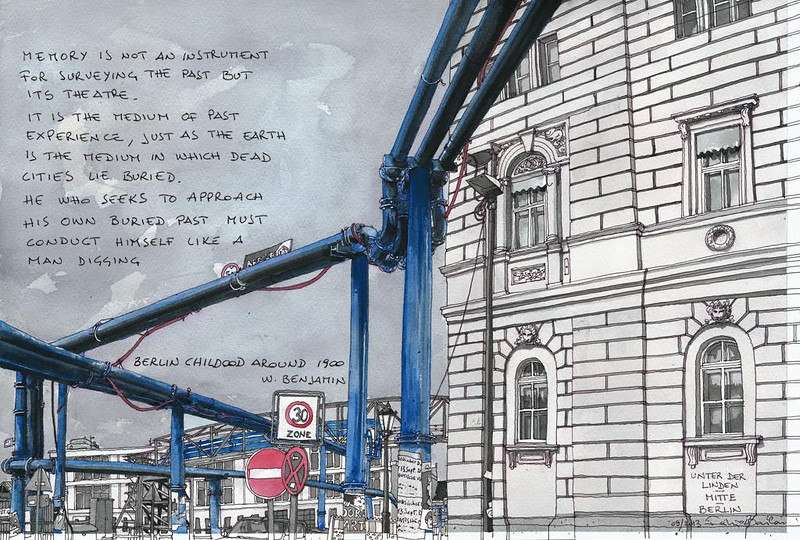












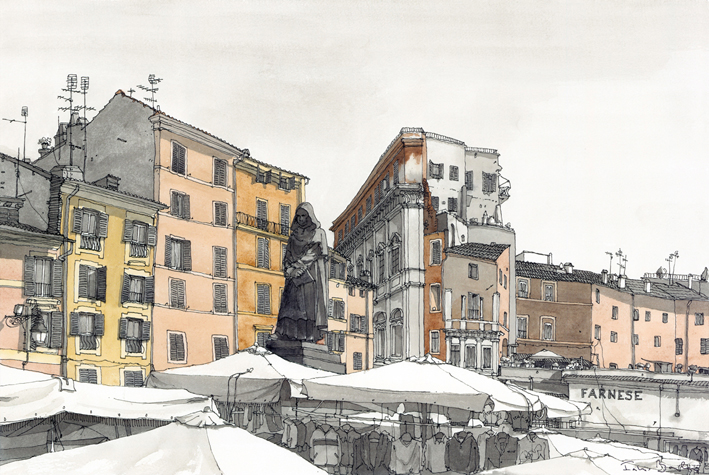
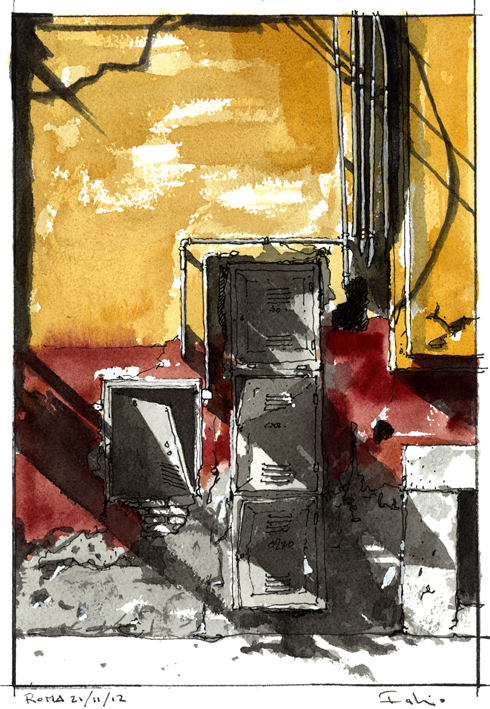


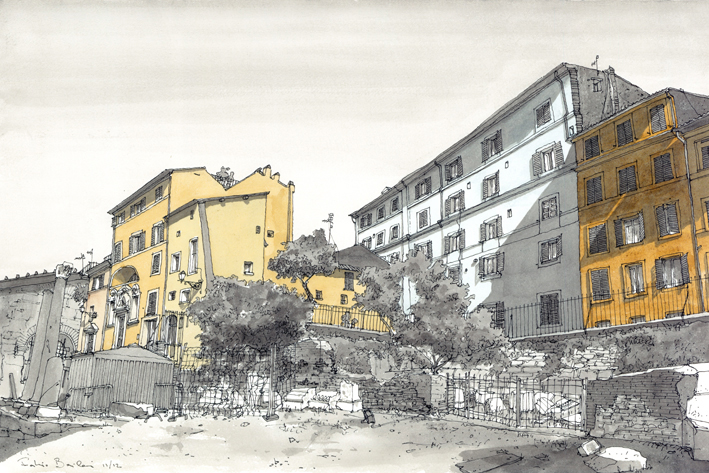


























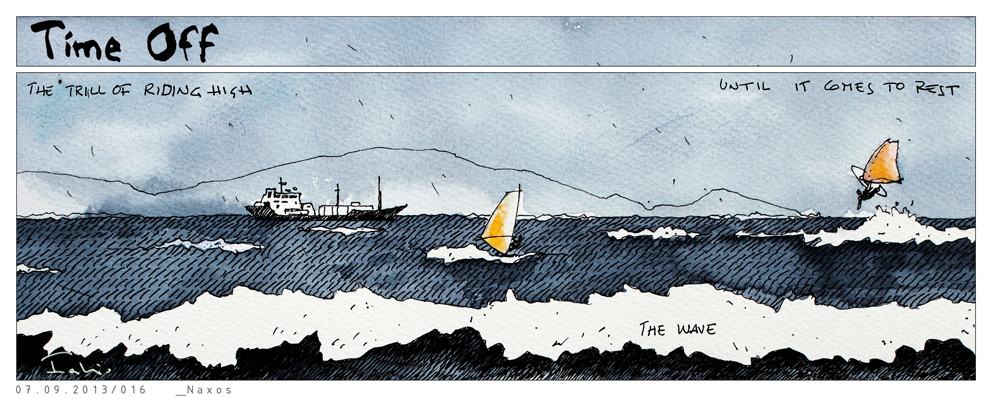


.jpg)
.jpg)
.jpg)
.jpg)
.jpg)
.jpg)
.jpg)
.jpg)
.jpg)
.jpg)
.jpg)
.jpg)
.jpg)
.jpg)
.jpg)
.jpg)
.jpg)
.jpg)
.jpg)
.jpg)
.jpg)
.jpg)
.jpg)
.jpg)
.jpg)